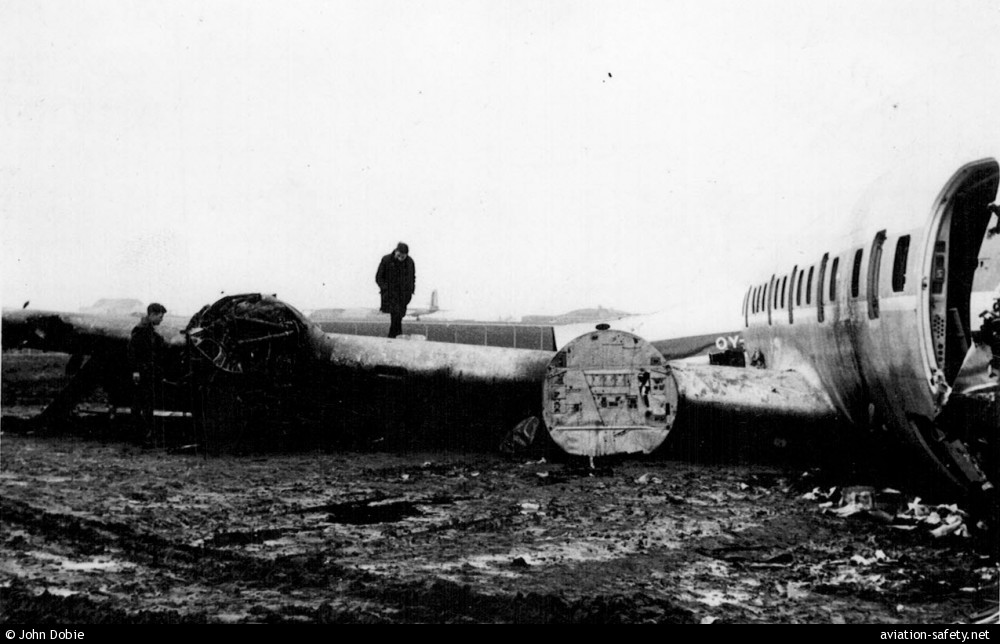
| Date: | Saturday 13 April 1963 |
| Time: | 03:04 |
| Type: |  Douglas DC-6B |
| Owner/operator: | Sterling Airways |
| Registration: | OY-EAP |
| MSN: | 43750/283 |
| Year of manufacture: | 1952 |
| Engine model: | Pratt & Whitney R-2800 |
| Fatalities: | Fatalities: 0 / Occupants: 3 |
| Aircraft damage: | Destroyed, written off |
| Category: | Accident |
| Location: | Kobenhavn-Kastrup Airport (CPH) -
 Denmark Denmark
|
| Phase: | Approach |
| Nature: | Ferry/positioning |
| Departure airport: | Las Palmas-Airport de Gran Canaria (LPA/GCLP) |
| København-Kastrup Airport (CPH/EKCH) | |
| Confidence Rating: |
The DC-6 departed Las Palmas on a three-engine ferry flight to Copenhagen, Denmark via Barcelona, Spain. The airplane took off after refueling at Barcelona at 22:24 GMT.
On short final to Copenhagen, probably immediately before passing the first approach lights, the pilot-in-command ordered full flaps. The speed was then 110-130 knots and the height rather low. The aircraft showed a tendency to bank which was counteracted by applying aileron control. At 100-200 m before the runway threshold, the pilot-in-command realized that he no longer had sufficient control to make a safe landing and decided to abandon the landing. When speed was around 100 knots full power was added, the gear was selected up and flaps were ordered to 20. Upon power application, the aircraft banked violently to the right. The wingtip struck the ground 200 m beyond the threshold and 80 m right of the centreline. The outer portion of the wing disintegrated and the aircraft crashed.
PROBABLE CAUSE: "During the approach to runway 04 with the starboard outer engine inoperative, the speed of the aircraft decreased to a value critical for safe manoeuvring. Because of this, the pilot-in-command attempted an overshoot. In the course thereof he lost control of the aircraft which, in a heavy bank, went into an uncontrolled right-hand turn, its starboard wing hit the ground, and the aircraft crashed. That the aircraft got into the above-mentioned critical situation must, to an essential degree, be attributed to the fact that the pilot-in-command selected full flaps at a time when the altitude and speed of the aircraft in relation to the distance from the runway threshold did not justify such disposition."
Sources:
ICAO Accident Digest No.15 - Volume I, Circular 78-AN/66 (75-79)
Location
Images:

photo (c) John Dobie; Kobenhavn-Kastrup Airport (CPH); April 1963

photo (c) John Dobie; Kobenhavn-Kastrup Airport (CPH); April 1963

photo (c) John Dobie; Kobenhavn-Kastrup Airport (CPH); April 1963

photo (c) John Dobie; Kobenhavn-Kastrup Airport (CPH); April 1963
Revision history:
| Date/time | Contributor | Updates |
|---|
The Aviation Safety Network is an exclusive service provided by:


 ©2024 Flight Safety Foundation
©2024 Flight Safety Foundation